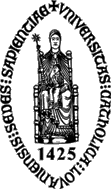


GenomeComb
Genomecomb moved to github on https://github.com/derijkp/genomecomb with documentation on https://derijkp.github.io/genomecomb. For up to date versions, go there. These pages only remain here for the data on the older scientific application (or if someone really needs a long obsolete version of the software)
cg multiselect ?options? ?datafile? ...
Command for using cg select on multiple files, and combine the results
cg multiselect performs a cg select on all given datafiles separately. It can output a separate result file for each datafile, or combine the results into one output file in various ways.
cg multiselect supports several (but not all) cg select options. For more info on thes options, refer to the cg select help.
The -combine option determines how the seperate cg select results are combined. Each query is done separately first before combining the result, so the query should be set up so that it can be run on each file separately and that the results are in the proper format to be combined. The following types of combination are supported:
The results are combined into a multicompar file using cg multicompar. The result files must thus be variant files or multicompar files. The command does not get extra info (sreg, varall) on the files, so multicompar is run without reannot: If a variant line is not in the result file, the data for the samples coming from that file will be filled with unknown (?) completely.
Results will be concatenated using cg cat with the merge option: If they have different headers, the final result contains data for each field that occurs in at least one of the source files. If a given field is not present in one of the source files, it will be empty for each line coming from this file.
This option can be useful for e.g. combining summary queries per sample
cg multiselect -combine cat -g 'sample * sequenced v type *' tmp/multicompar1.tsv tmp/multicompar2.tsv
Create a separate resultfile for each datafile. Each resultfile will be named using the original filename with the filename given in the -o option as a prefix.
Query